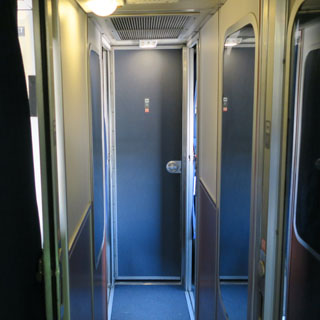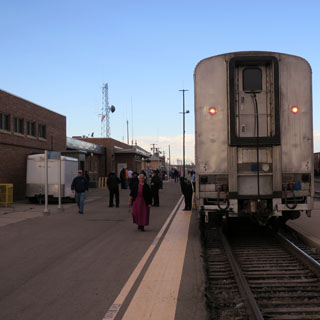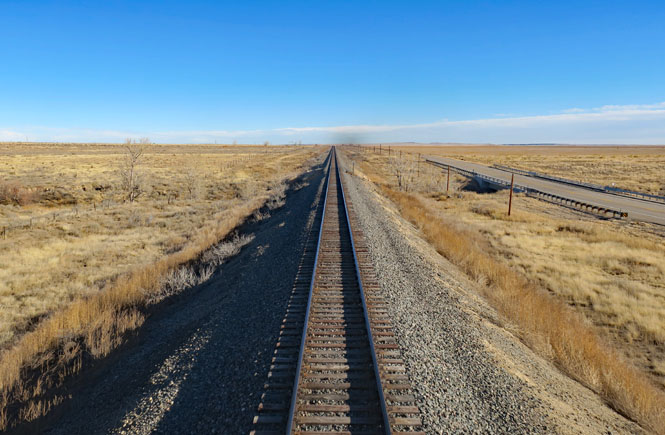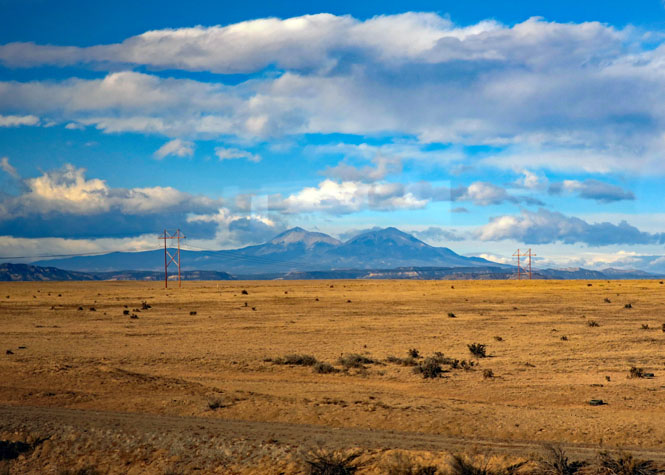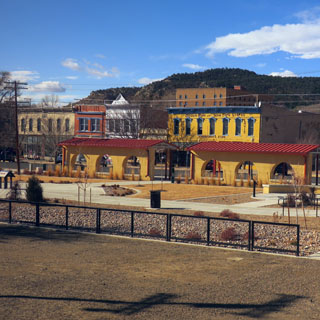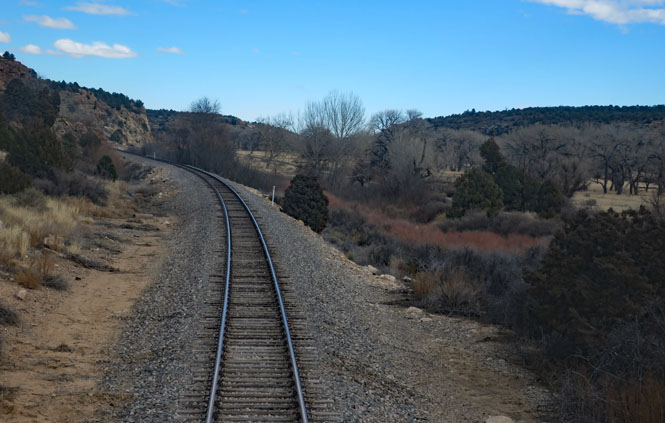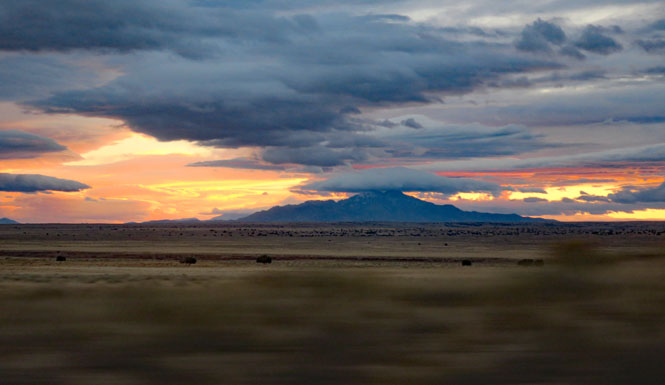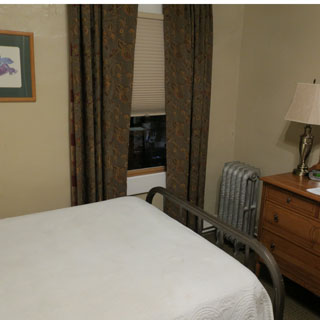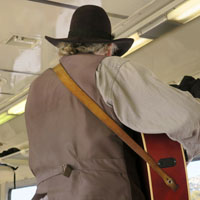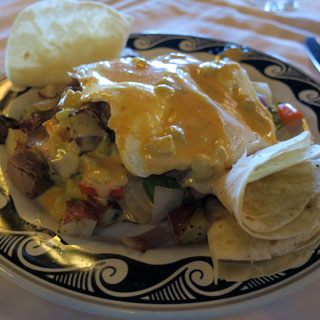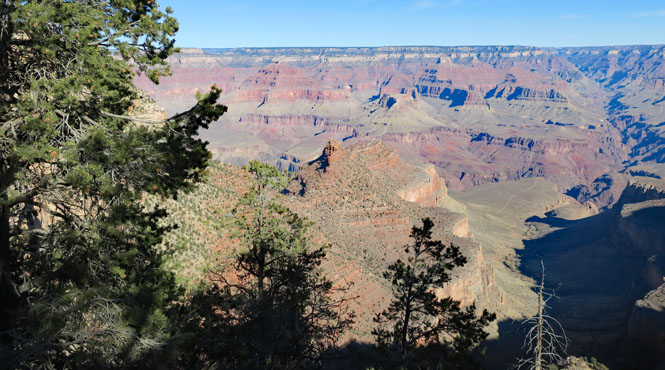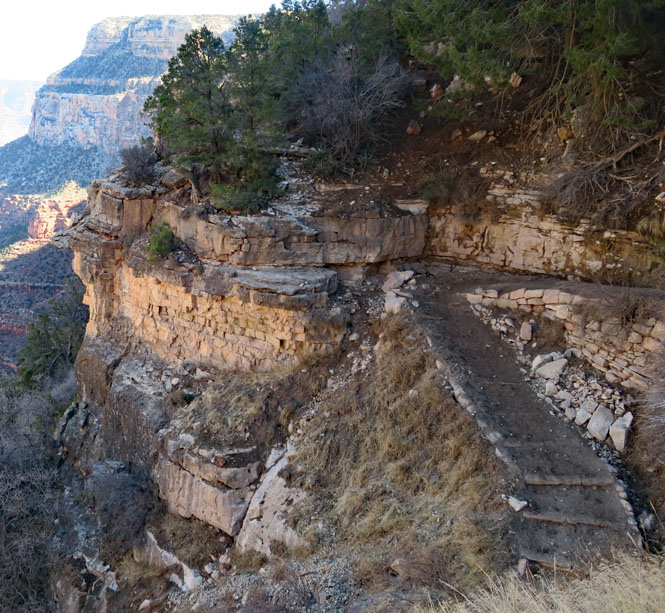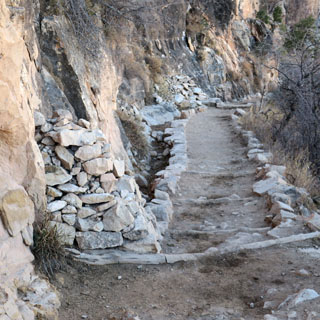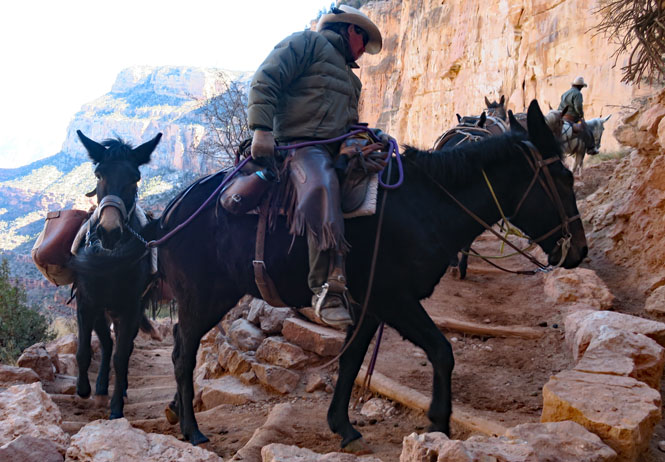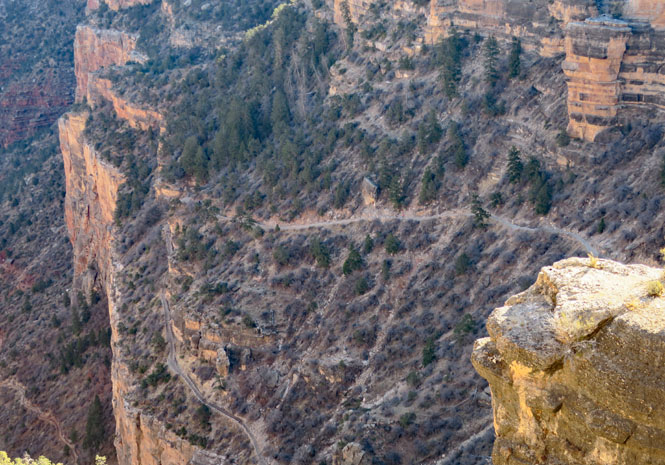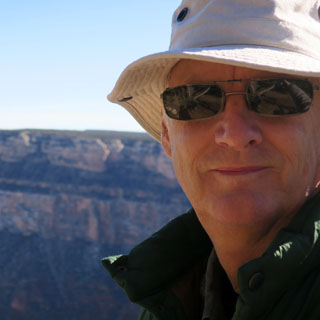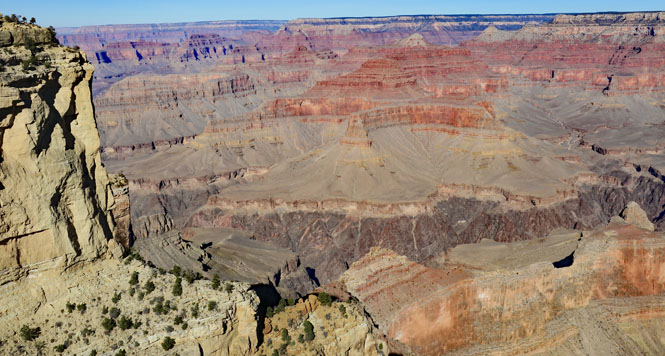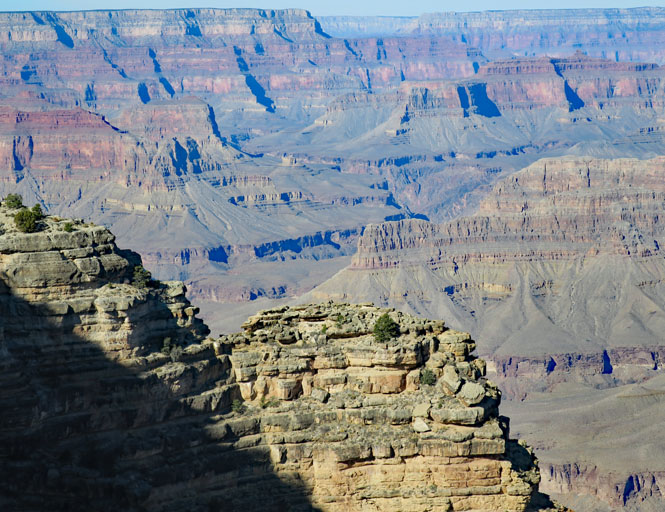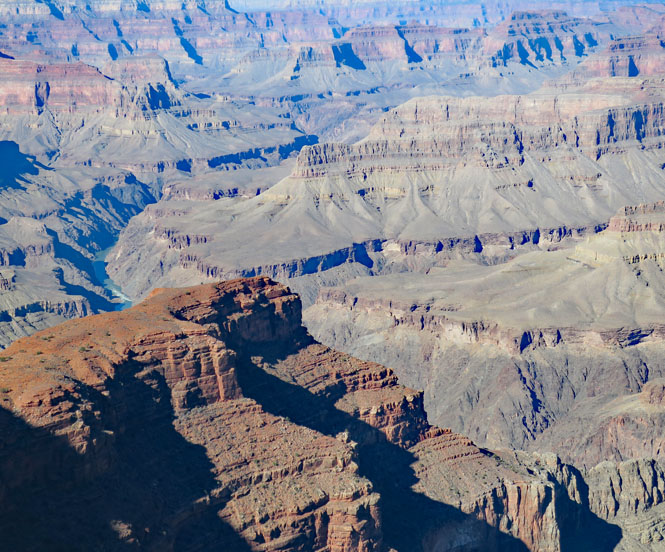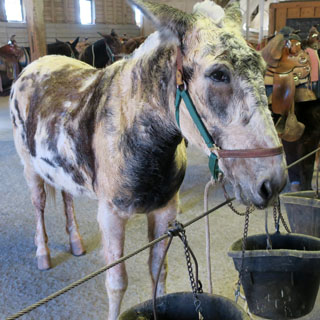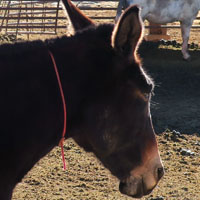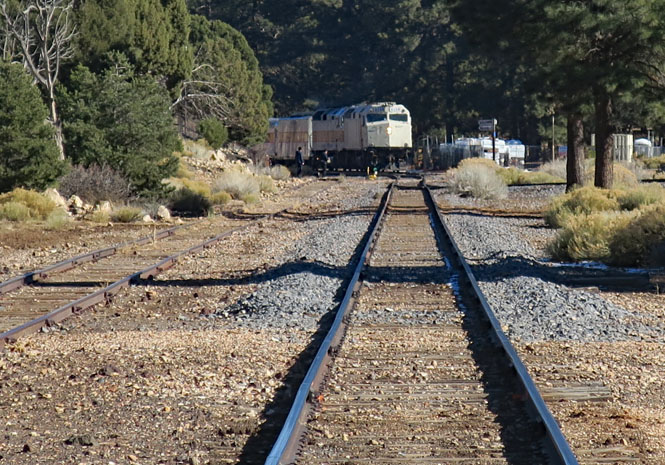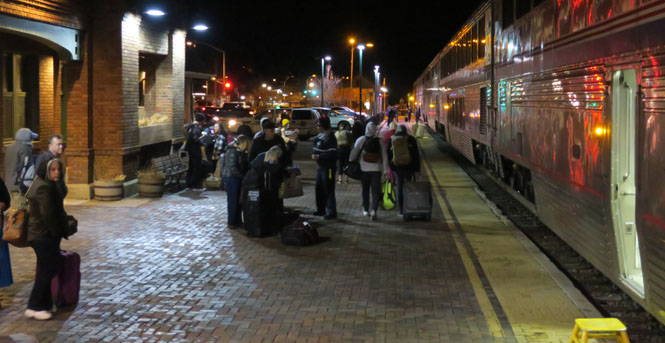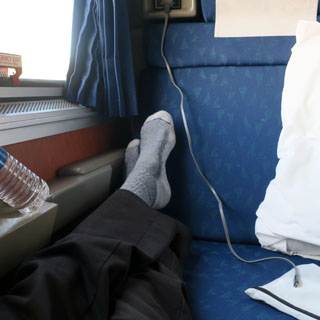January, 2018

This would be the third time I've made plans just a few days ahead of time to visit the Grand Canyon by train. The trick is to find a window of three days that has clear weather, and short-term planning is the best way to ensure that the window holds.
 Kansas
Kansas
Catching the train in Kansas is inconvenient. There's nothing to be done about that; you'll be catching the train at 2:45am. The return trip is no less inconvenient as you'll be arriving at 2:55am.
It almost looks like Amtrak intentionally times their trains to travel across Kansas at night...
 Colorado
Colorado
It's very cold, but clear. This is the stop for a crew change in La Junta, Colorado.

Only Amtrak uses the La Junta-to-Trinidad track. Much of it has been upgraded, so it's not the rough section that it once was.
The Spanish Peaks.
 New Mexico
New Mexico
A short fresh-air break in Raton, New Mexico. You have a chance to get off the train and walk around a bit (and the smokers can do their thing, as well).
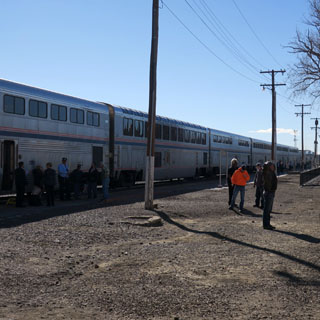
The section along the Mora River (north of Watrous) is interesting as it doesn't follow the route of any highway.
West of Albuquerque, the trains are allowed up to 90mph. This is the BN&SF mainline.
 Arizona
Arizona
On my earlier trips, I was able to get off the train in Williams and take the short shuttle to the hotel. That shuttle has been cancelled, so now you'll need to get off at Flagstaff. I stayed at the historic old Hotel Weatherford, just north of the station.
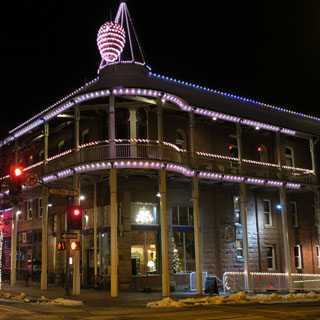
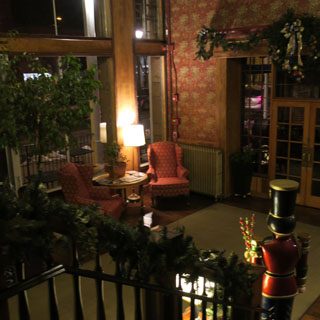
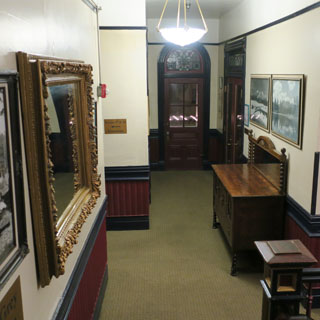
Catching the early-morning shuttle (at the train station) that would take me to Williams.
Williams is the end point of the Grand Canyon Railroad. The train has exceptionally knowledgeable attendants as well as live entertainment.
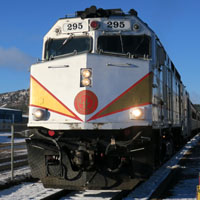
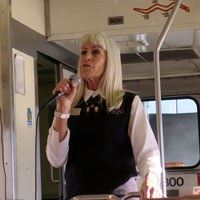
Midway to the canyon you'll be passing through a high desert.
El Tovar is the grand old lodge of the park. I'll stay two nights. Caprese sliders? They're perhaps not the best offering on the menu.

The view from just outside the hotel.
Inside the El Tovar. Their breakfast prime rib hash is justifiably famous.
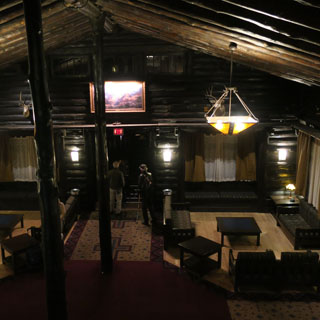
The Lookout (designed by Mary Colter) and El Tovar (designed by Charles Whittlesey).

At the trail-head of the Bright Angel Trail. I'll only be walking down about 1.5 miles--to near the first rest station. It was quite cold, but any snow had melted enough that the trail was free of ice.

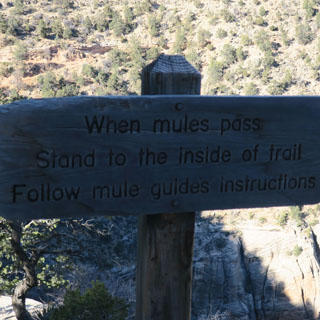
The quality of the trail is really good. Likely it has been improved many times over the century.
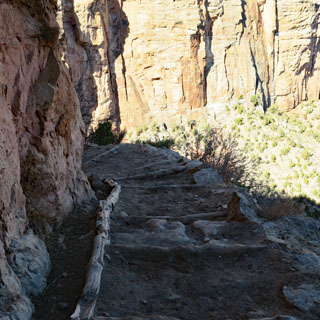
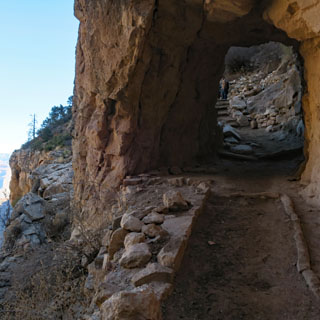
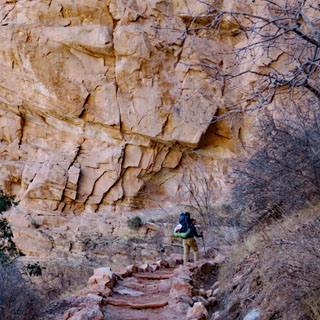
"If the mule should slip, all would be over. BUT - the
mule doesn't slip. The trail is never as narrow or as steep as you will describe
it when you get back home. If it were, no living animal could possibly make the
trip safely."
- Fred Harvey publication, 1909
I did not ride a mule, but there were a few on the trail this morning.
Trail View Overview.
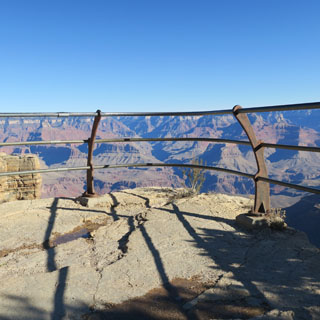
Maricopa Point.
Powell Point.
Hopi Point (my favorite).
A team of mules returning from their long climb up from the river. That's "Donk" cooling down in the barn.
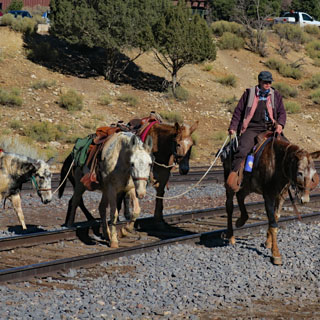
Some fresher mules out in the corral--perhaps anxious to be back on the trail?
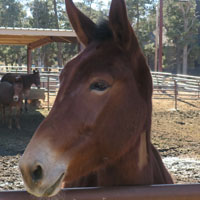
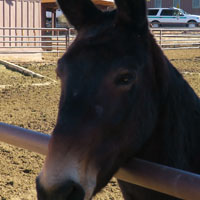
My train is waiting. It leaves at 3:30pm every day for the two hour trip back to Williams.
Back in Flagstaff the day before catching the early morning Amtrak.
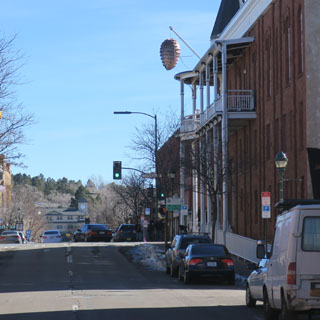
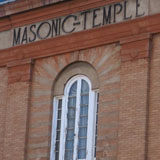

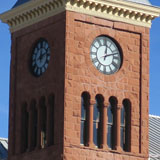
It's a surprisingly busy place, the Flagstaff train station at 5:30am. A load of 100 students has just arrived from the west coast (the University of Northern Arizona is in Flagstaff).
I was in coach-class for the outward trip, but would stay in a roomette for the return trip. It's nice to be able to fold the facing seats down into a mostly comfortable bed.
